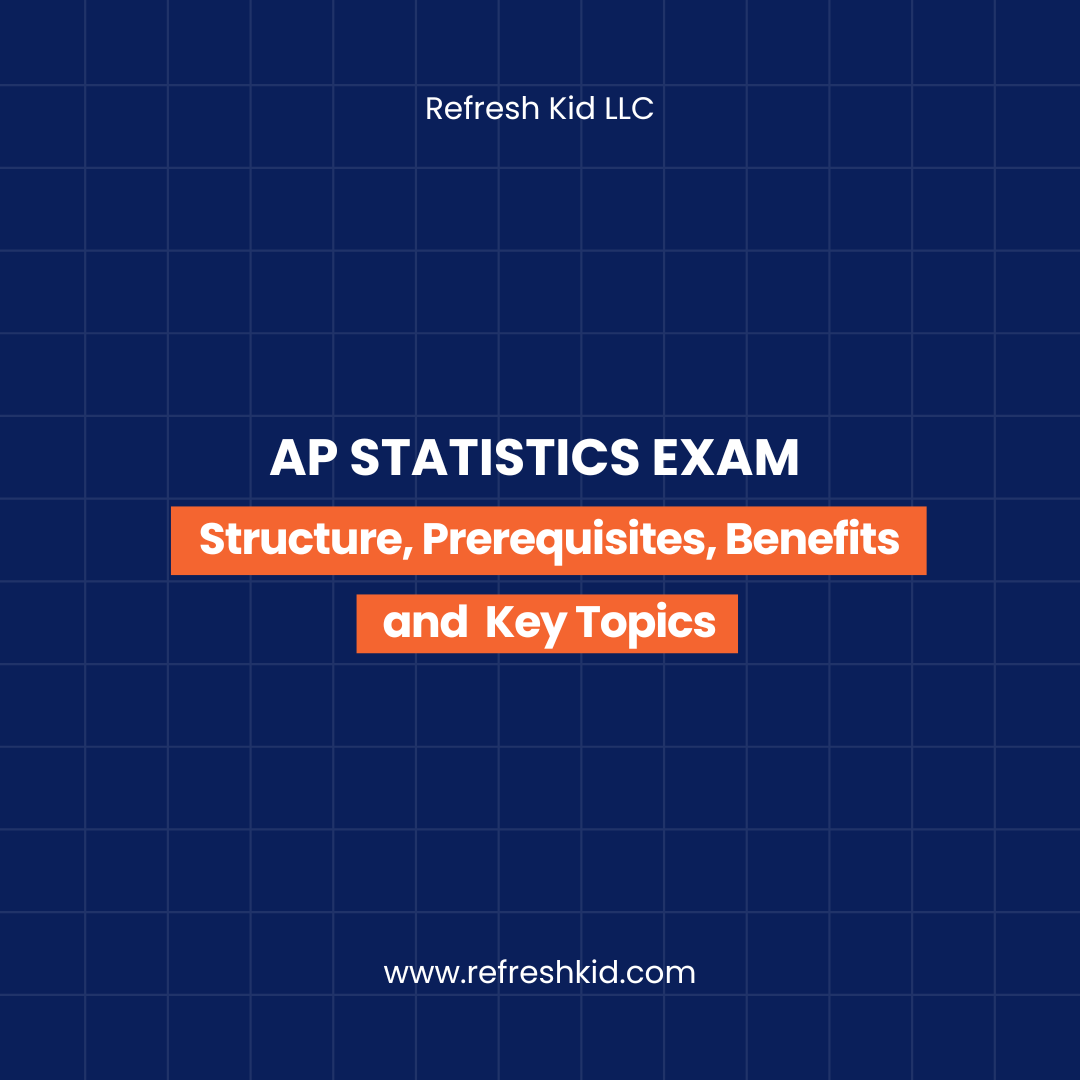What Exactly Is the AP Statistics Exam?
The AP Statistics Exam is not your typical math test. Instead of focusing on endless formulas, it measures a student’s ability to reason with data, interpret results, and explain findings in context.
Every May, students sit for this College Board exam with the goal of earning college credit and standing out in admissions. A score of 3 or higher (out of 5) is often enough to unlock credit or advanced placement, though requirements vary by college.
In practice, the exam prepares students for a world that runs on data. Think election polling, stock market analysis, or even deciding which sports player deserves MVP; statistics drive those decisions.
If you’d like structured guidance, check out our AP Statistics course.
How Is the AP Statistics Exam Structured?
The exam is divided into two equal-weighted sections, each testing different skills:
Section I: Multiple Choice
- 40 questions in 90 minutes
- Worth 50% of the exam score
- Covers interpreting graphs, probability, and drawing conclusions from data
Section II: Free Response & Investigative Task
- 6 total questions:
- 5 short-answer free response questions
- 1 longer investigative task requiring multi-step reasoning
- 90 minutes
- Worth 50% of the exam score
Value Tip: Many students can solve problems but lose points when asked to “explain in context.” Practicing free-response writing with an AP Stats tutor ensures clarity and precision.
Who Should Take the AP Statistics Exam?
You don’t need calculus-level math to take AP Stats. The prerequisites are simpler:
- Completion of Algebra II or equivalent
- Ability to read carefully and write clearly (since explanations matter as much as answers)
- Comfort with graphing calculators, TI-83/84 or similar is required
Typically, juniors and seniors take AP Stats, but strong sophomores sometimes enroll.
A 10th grader who enjoys analyzing baseball batting averages may thrive in AP Stats earlier than expected, while another student might benefit from waiting until 11th grade for more algebra practice.

What Are the Benefits of Taking AP Statistics?
Families often wonder: Is AP Stats worth it compared to other AP classes? Here’s why the answer is yes:
- College Credit and Savings
- Many universities grant credit for AP Stats, cutting down tuition costs.
- Application Boost
- Admissions teams value students who show quantitative and analytical rigor.
- Everyday Relevance
- Unlike abstract math, statistics show up in news polls, medical studies, and even product reviews.
- Career Advantage
- Fields like business, medicine, economics, psychology, and journalism rely heavily on statistics.
- Transferable Skills
- Students improve in problem-solving, critical thinking, and communication.
Parents often notice that after AP Stats, their child becomes more confident in analyzing everyday information, like questioning whether a “study” shared online is actually credible.
What Topics Does the AP Statistics Exam Cover?
The curriculum is divided into four major themes, which directly align with exam content:
1. Exploring Data
- Measures of central tendency (mean, median, mode)
- Variability (range, IQR, standard deviation)
- Graphical displays: histograms, scatterplots, boxplots
2. Sampling and Experimentation
- Designing valid surveys
- Random sampling methods
- Experimental design principles (control, randomization, replication)
3. Anticipating Patterns (Probability)
- Probability rules
- Random variables (discrete vs. continuous)
- Normal distribution and z-scores
4. Statistical Inference
- Confidence intervals
- Hypothesis testing
- Significance testing (p-values, chi-square, t-tests)
- Regression models
Here’s how exam questions are typically weighted:
| Unit | Weight on Exam |
| Exploring Data | 15–25% |
| Sampling & Experimentation | 10–15% |
| Probability & Random Variables | 20–30% |
| Statistical Inference | 30–40% |
What Challenges Do Students Face in AP Stats?
Even math lovers sometimes find AP Statistics tricky. Common struggles include:
- Wordy Problems: Long scenarios require careful reading.
- Context-Based Explanations: Students can’t just give a number; they must explain what it means in real life.
- Time Management: Both sections last 90 minutes, but free responses can feel rushed.
Case Study: One student breezed through algebra but lost points on the AP Stats Exam for failing to explain “what a confidence interval means for a population.” After practice with guided feedback, they improved their free-response writing and earned a 5 the following year.

How Can Students Prepare Effectively for the AP Statistics Exam?
Here are five proven strategies:
- Learn Your Calculator Inside Out
- Save time by mastering built-in functions for regression and probability.
- Write Explanations in Plain English
- Always tie answers back to the scenario. For example: “The confidence interval suggests between 60–70% of voters support the policy.”
- Practice Free Response Questions Weekly
- Don’t wait until spring; make it part of your regular study.
- Use Real Data to Stay Engaged
- Analyze sports stats, social media trends, or even your school’s survey results.
- Work With an AP Statistics Online Tutor
- Tutors help spot weaknesses early. Try a free class to experience the difference.
How Does Refresh Kid Support AP Stats Students?
At Refresh Kid, we specialize in AP prep with personalized strategies:
- Tailored Learning Plans: Every student has unique strengths and weaknesses.
- Expert AP Stats Tutors: Focused on building both accuracy and explanation skills.
- Flexible Schedules: Sessions that fit around extracurriculars and sports.
Weekly Progress Reports: Parents stay in the loop.
Families often tell us: “We saw a noticeable jump in confidence within just a few weeks.”
Where Can You Find Additional AP Stats Resources?
Here are some safe, authoritative options:
- College Board AP Statistics Course Overview
- National Center for Education Statistics (NCES) – real-world datasets for practice
Is the AP Statistics Exam Worth It?
Absolutely. The AP Statistics Exam develops analytical skills that last a lifetime. Whether students pursue science, business, or the arts, being able to understand data gives them an edge.
If your student is considering AP Stats, encourage them to embrace it. With practice, persistence, and perhaps support from an experienced AP Stats tutor, they can not only pass, but excel.



